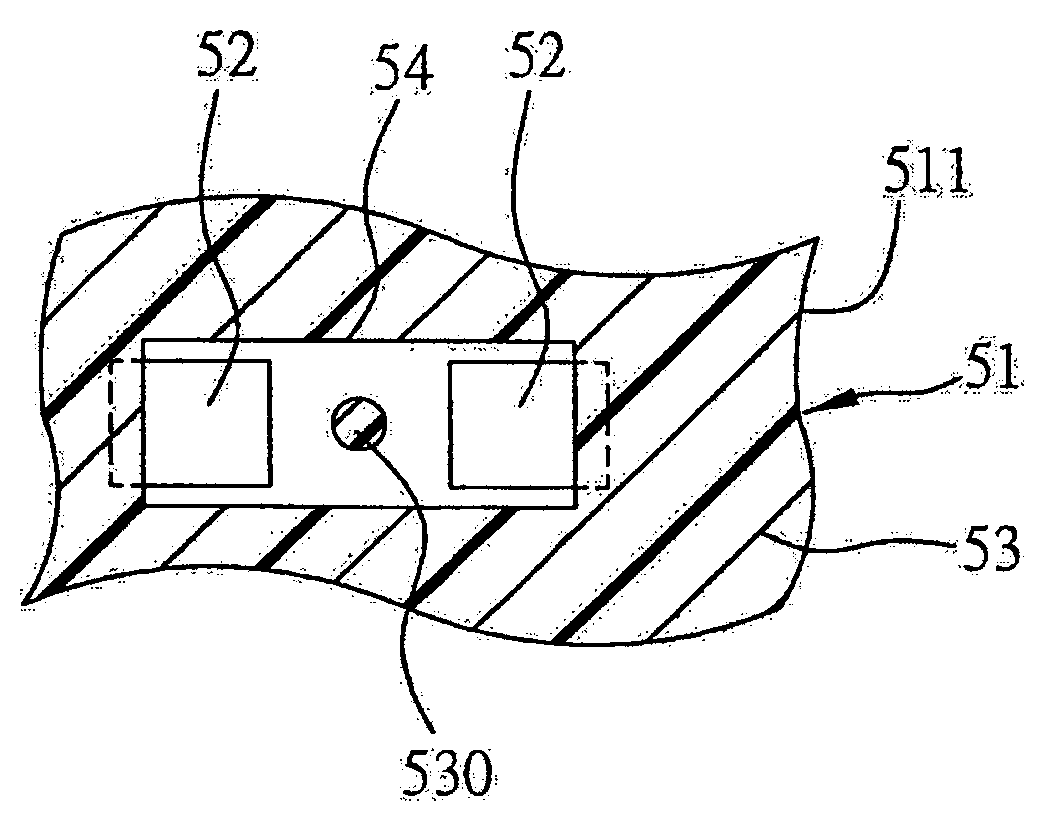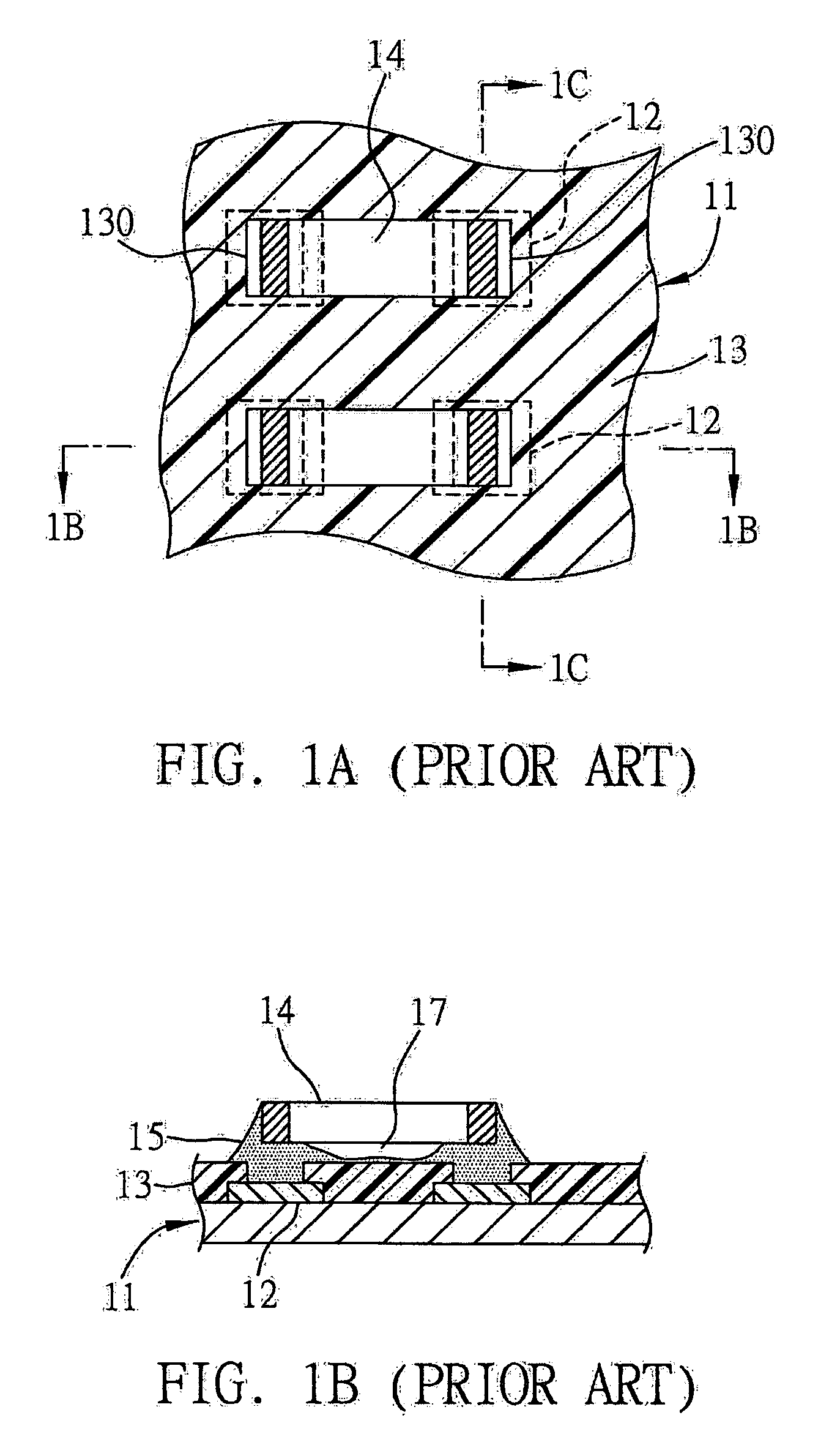Electronic carrier board and package structure thereof
a technology of electronic carrier board and package structure, which is applied in the direction of printed circuit aspects, sustainable manufacturing/processing, final product manufacturing, etc., can solve the problems of not being able to further reduce in size, occupying a significant amount of space, and not being able to use relatively large electronic components. , to achieve the effect of smooth flow through the groov
- Summary
- Abstract
- Description
- Claims
- Application Information
AI Technical Summary
Benefits of technology
Problems solved by technology
Method used
Image
Examples
first preferred embodiment
[0037]FIGS. 5A and 5B are top views of an electronic carrier board and an electronic component mounted thereon according to a first preferred embodiment of the present invention.
[0038] Referring to FIGS. 5A and 5B, the electronic carrier board 51 of the present invention comprises: a carrier 511; a plurality of bond pads, including at least one pair of bond pads 52, formed on a surface of the carrier 511; and a protective layer 53 covering the surface of the carrier 511. The protective layer 53 is formed with an opening 54 corresponding to the at least one pair of bond pads 52 to expose at least three sides of each of the paired bond pads 52. And the protective layer 53 includes at least one independent residual portion 530 located in the opening 54 and between the paired bond pads 52.
[0039] The electronic carrier board 51 can be a package substrate used for chip packaging, a circuit board, or a printed circuit board, etc. In this embodiment, the package substrate is described. Th...
second preferred embodiment
[0045]FIG. 7 is a top view of an electronic carrier board according to a second preferred embodiment of the present invention.
[0046] The electronic carrier board and a package structure thereof of this second embodiment are similar to those of the first preferred embodiment, with a primary difference in that, in the second embodiment, the protective layer 53 includes a plurality of independent residual portions 530 located in the opening 54 and between the at least one pair of bond pads 52. Two independent residual portions are shown in FIG. 7 but do not set a limitation for the present invention. These independent residual portions 530 are not in contact with the rest of the protective layer 53. By such arrangement, the electronic component can be well supported by the independent residual portions 530 and the EMC 57 can smoothly flow through the groove without the dead space under the electronic component and fill the space under the electronic component.
third preferred embodiment
[0047]FIG. 8 is a top view of an electronic carrier board according to a third preferred embodiment of the present invention.
[0048] The electronic carrier board and a package structure thereof of this third embodiment are similar to those of the first preferred embodiment, with a primary difference in that, in the third embodiment, the protective layer 53 includes a plurality of independent residual portions 530 located in the opening 54 and between the at least one pair of bond pads 52. Two independent residual portions are shown in FIG. 7 but do not set a limitation for the present invention. These independent residual portions 530 come into contact with the bond pads 52 but are not in contact with the rest of the protective layer 53. By such arrangement, the electronic component can be well supported by the independent residual portions 530 and the EMC 57 can smoothly flow through the groove without the dead space under the electronic component and fill the space under the elect...
PUM
 Login to View More
Login to View More Abstract
Description
Claims
Application Information
 Login to View More
Login to View More - R&D
- Intellectual Property
- Life Sciences
- Materials
- Tech Scout
- Unparalleled Data Quality
- Higher Quality Content
- 60% Fewer Hallucinations
Browse by: Latest US Patents, China's latest patents, Technical Efficacy Thesaurus, Application Domain, Technology Topic, Popular Technical Reports.
© 2025 PatSnap. All rights reserved.Legal|Privacy policy|Modern Slavery Act Transparency Statement|Sitemap|About US| Contact US: help@patsnap.com



